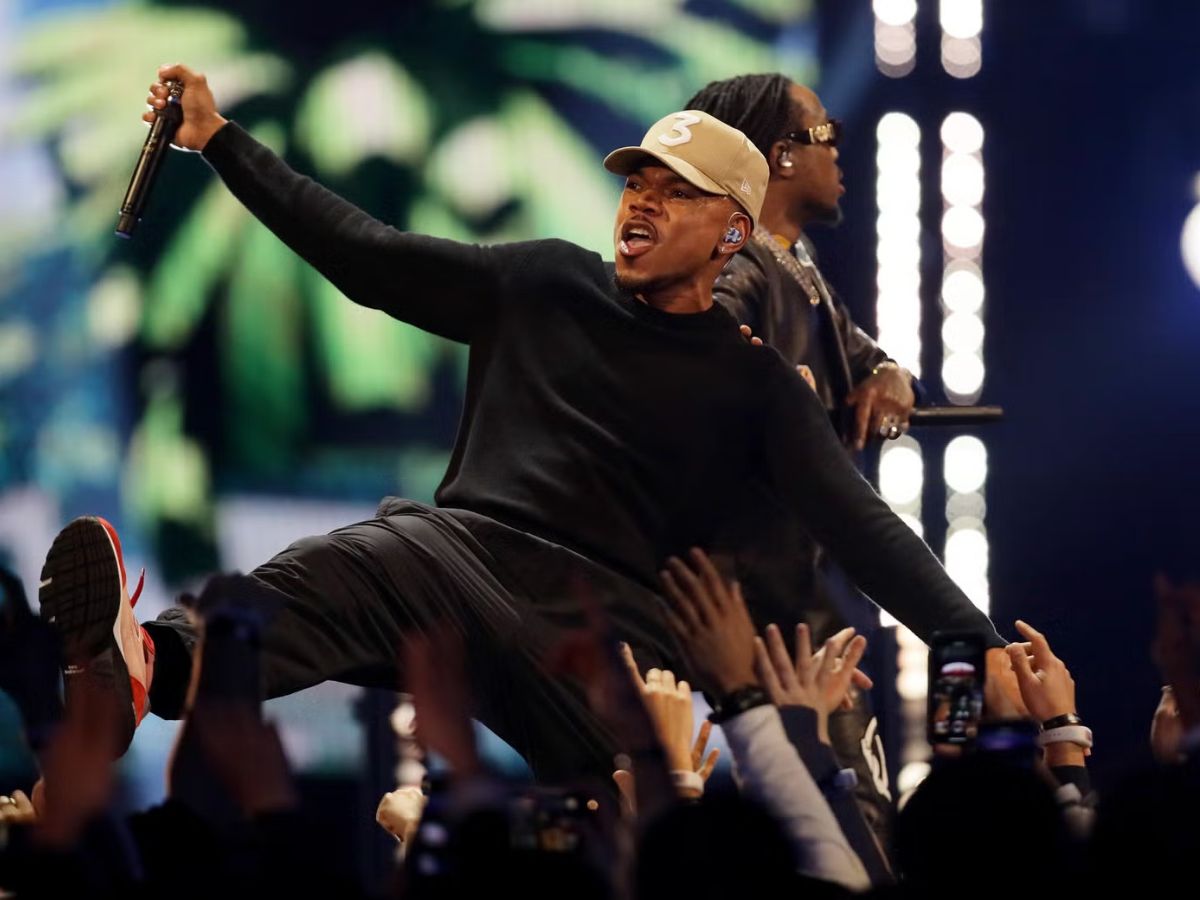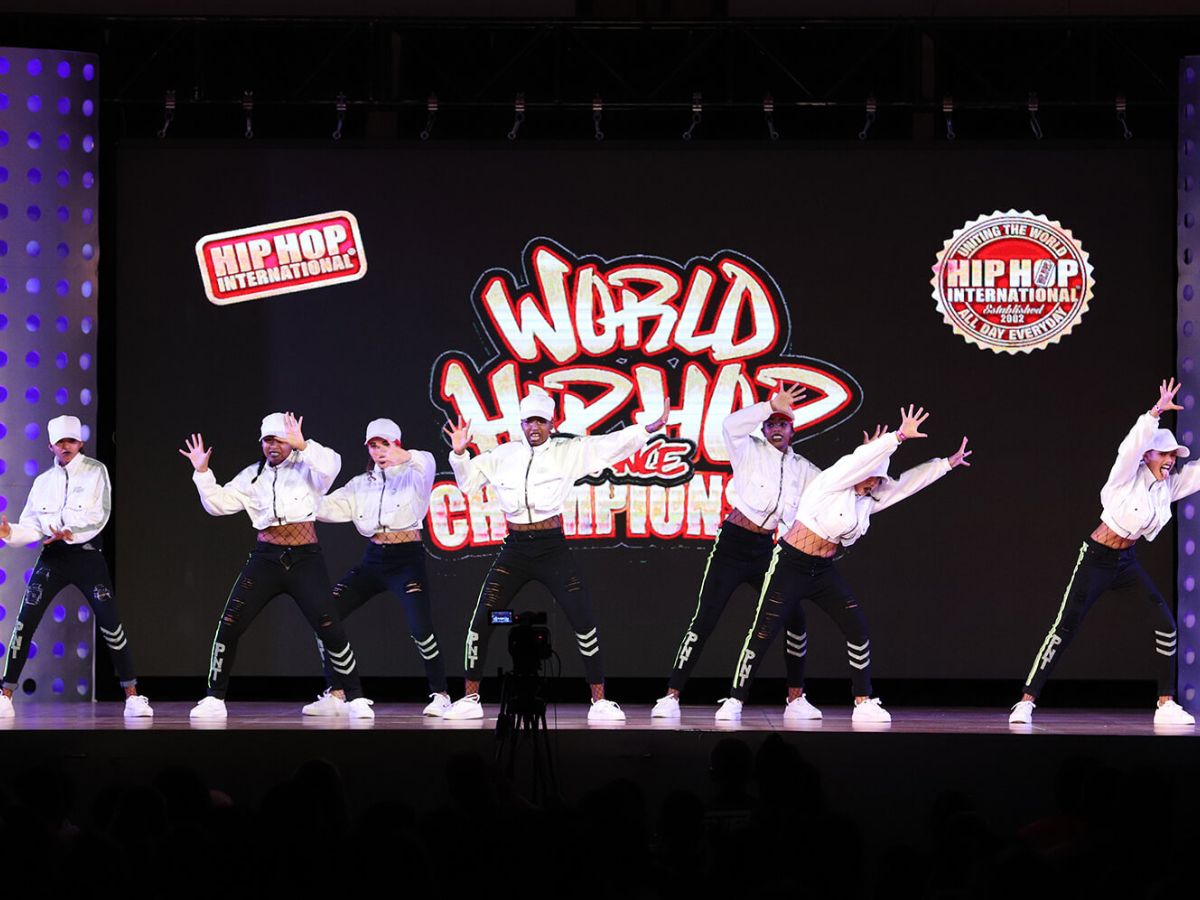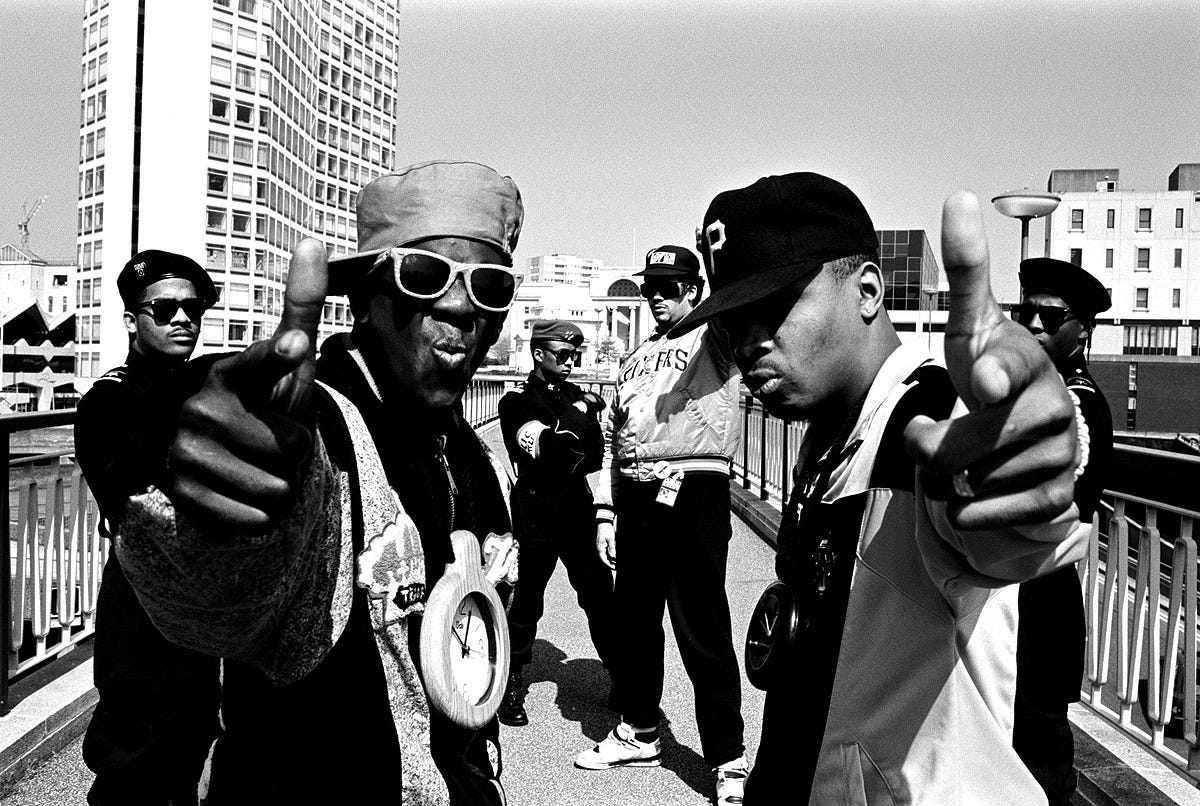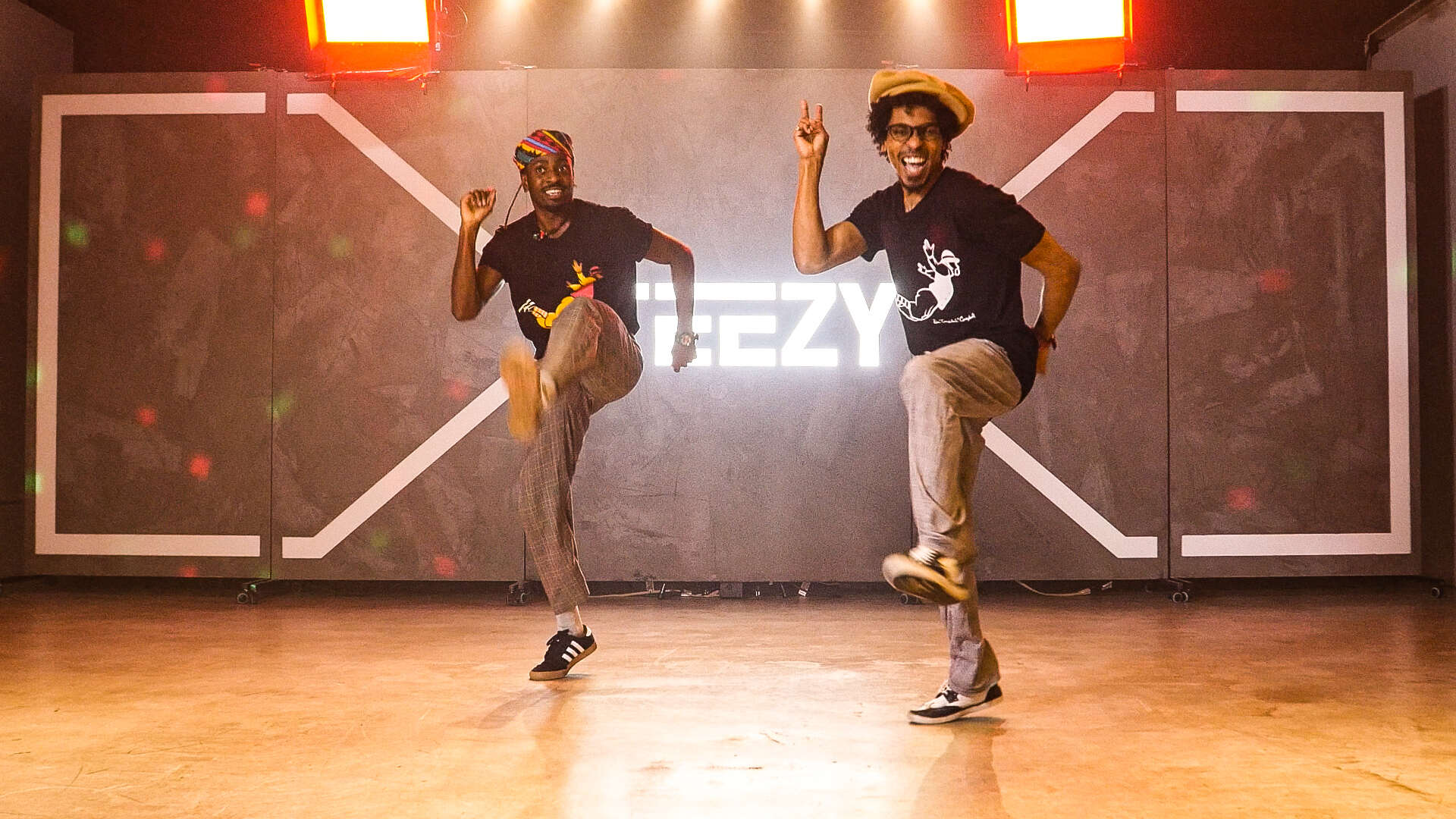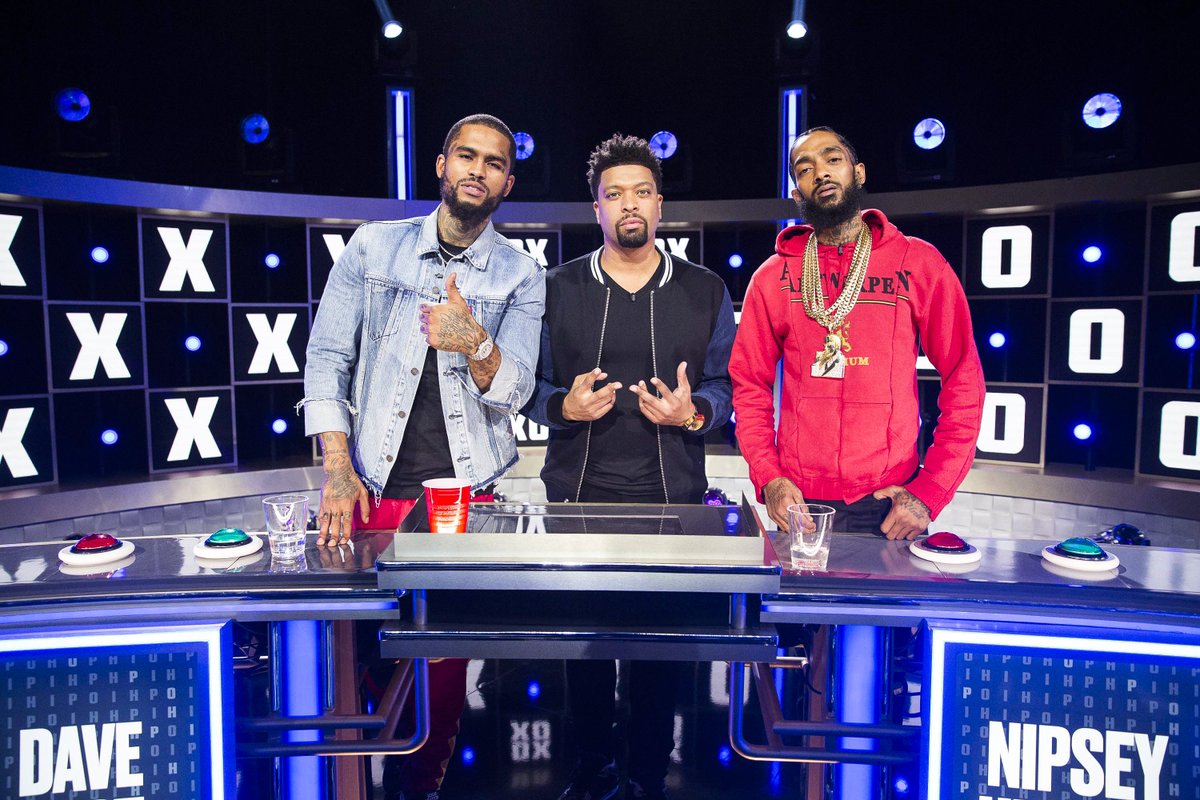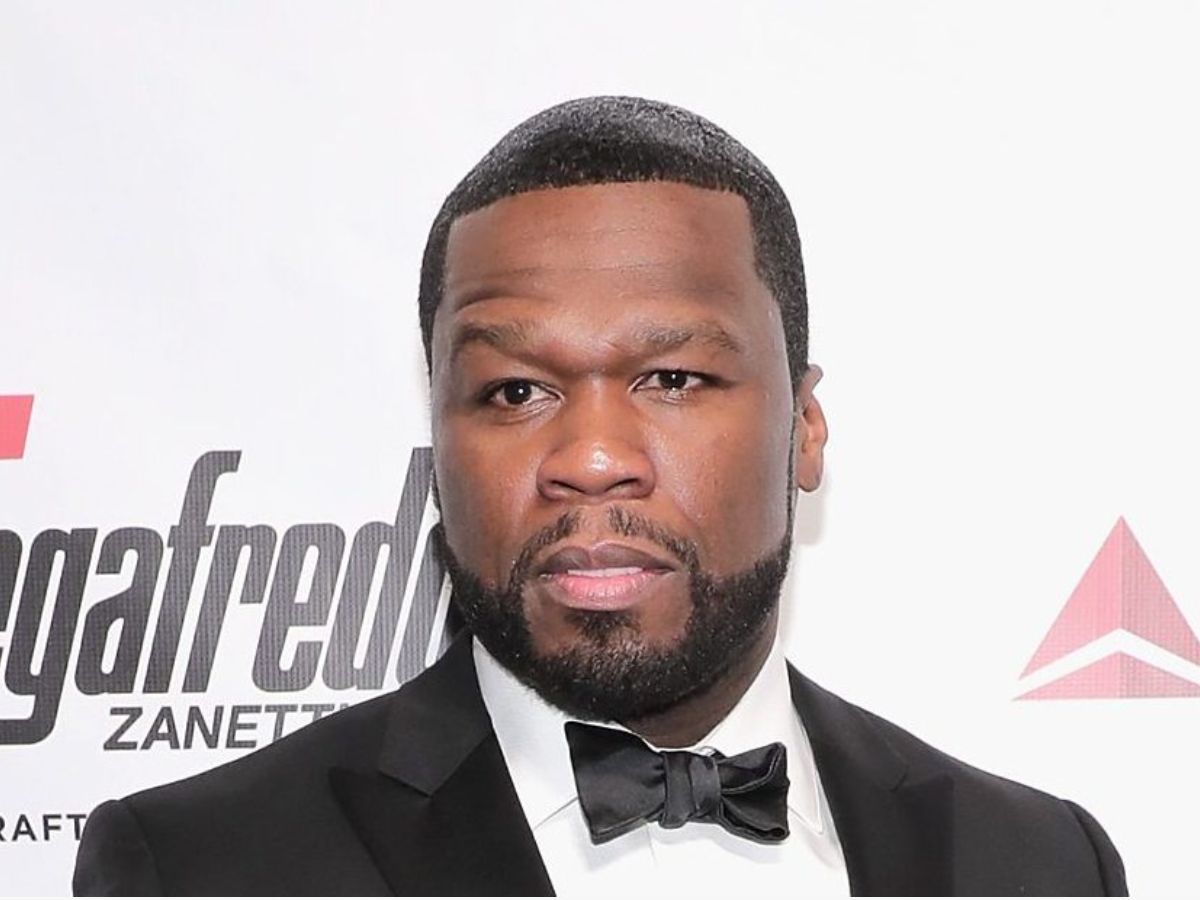

Hip Hop
What Is The Break In Hip Hop
Modified: January 22, 2024
Discover the origins and significance of the break in hip hop, the iconic dance style that helped shape the genre. Explore the evolution of hip hop through its rhythmic foundation.
(Many of the links in this article redirect to a specific reviewed product. Your purchase of these products through affiliate links helps to generate commission for AudioLover.com, at no extra cost. Learn more)
Table of Contents
- Introduction
- Origins of Hip Hop
- Evolution of Hip Hop
- Elements of Hip Hop
- The Break in Hip Hop: An Essential Component
- Definition of the Break
- Importance of the Break in Hip Hop
- Different Types of Breaks in Hip Hop
- Role of the DJ in Incorporating Breaks
- Examples of Iconic Breaks in Hip Hop History
- Impact of the Break on Hip Hop Culture
- Conclusion
Introduction
Hip Hop has been a revolutionary force in the world of music and culture since its inception in the late 1970s. It has not only shaped the music industry but has also influenced fashion, art, and social movements. One of the key elements that make Hip Hop unique and dynamic is the break.
From its early beginnings in the South Bronx, Hip Hop has grown to become a global phenomenon, captivating audiences with its vibrant beats, captivating lyrics, and impressive dance moves. But what exactly is the break in Hip Hop, and why is it such a crucial component of the genre?
The break refers to a section – typically a drum solo or instrumental interlude – within a song where the music drops out, leaving room for the DJ or the breakdancer to showcase their skills. It is often characterized by its infectious rhythm, syncopated beats, and fragmented vocal snippets. This moment of musical pause and raw energy is what sets Hip Hop apart from other genres.
Throughout the years, the break has evolved and taken on various forms, influenced by different sub-genres of Hip Hop, such as boom bap, trap, and gangsta rap. However, no matter the style, the break remains an essential component that appeals to both hardcore Hip Hop enthusiasts and casual listeners alike.
In this article, we will take a closer look at the origins of Hip Hop, the evolution of the genre, the elements that define it, and the role played by breaks in shaping the culture and music. We will explore the different types of breaks commonly found in Hip Hop and delve into examples of iconic breaks in Hip Hop history. Additionally, we will examine the impact of the break on Hip Hop culture as a whole.
By gaining a deeper understanding of the break in Hip Hop, we can truly appreciate its significance and recognize its influence as an integral part of this ever-evolving genre.
Origins of Hip Hop
Hip Hop originated in the South Bronx, New York City, in the 1970s. It emerged as a creative outlet for marginalized African American and Latino communities who sought to express their experiences and frustrations through music, dance, and art. The social and economic challenges faced by these communities, coupled with the decline of disco, paved the way for the birth of a new cultural movement – Hip Hop.
The origins of Hip Hop can be traced back to the block parties and DJ battles that took place in the Bronx. DJs such as Kool Herc, Grandmaster Flash, and Afrika Bambaataa played a pivotal role in shaping the sound of Hip Hop by utilizing two turntables and a mixer to create seamless transitions and innovative techniques like scratching and backspinning.
These DJs would isolate the break or the instrumental section of a song, extending it to allow dancers to showcase their skills. This practice of extending the break, known as breakbeat DJing, became the foundation of Hip Hop music production. DJs would hunt for records with the best breaks and create a continuous stream of beats, providing a platform for MCs (Master of Ceremonies) to rap over.
Amidst this musical revolution, breakdancing, or b-boying, also emerged as a prominent element of Hip Hop culture. The dance form incorporated acrobatic moves and intricate footwork, with dancers battling each other to display their creativity and athleticism. Breakdancing brought a visual element to Hip Hop, captivating audiences with its dynamic movements and rhythm.
Additionally, graffiti art played a significant role in the visual representation of Hip Hop culture. Artists would use spray paint to create vibrant and elaborate murals, often with social and political messages.
The origins of Hip Hop reflect a powerful response to the socio-political climate of the time. It provided a platform for marginalized voices to be heard and celebrated. Through music, dance, and art, Hip Hop became a means of self-expression, empowerment, and a way to defy the status quo.
Evolution of Hip Hop
Since its humble beginnings in the South Bronx, Hip Hop has undergone a remarkable evolution, both in terms of musical style and cultural impact. As it spread beyond its birthplace, Hip Hop began to incorporate various influences, diversifying its sound and reaching a global audience.
In the 1980s, Hip Hop gained mainstream traction with the emergence of artists like Run DMC, LL Cool J, and Public Enemy. This era, often referred to as the “Golden Age of Hip Hop,” saw a focus on lyricism, storytelling, and social commentary. Artists used their platforms to shed light on societal issues such as racism, poverty, and police brutality.
The 1990s witnessed further expansion and diversification of the genre, with the rise of sub-genres such as gangsta rap, West Coast G-funk, and alternative Hip Hop. Artists like Tupac Shakur, The Notorious B.I.G., and Dr. Dre became cultural icons, leaving an indelible mark on Hip Hop history.
As technology advanced, the 2000s brought about the digital era of Hip Hop. The rise of the internet and digital recording techniques made it easier for independent artists to create and distribute music. This fueled a wave of underground movements and led to the rise of sub-genres like trap, conscious rap, and mumble rap, each with its own distinct characteristics and fanbase.
Today, Hip Hop continues to evolve and push boundaries. Artists like Kendrick Lamar, J. Cole, and Cardi B have brought socially conscious lyrics and innovative production styles to the mainstream, while artists like Lil Uzi Vert and Travis Scott have embraced experimentation and genre-bending to create new sonic landscapes.
Furthermore, the influence of Hip Hop has extended beyond music. It has become a driving force in fashion, influencing trends and shaping the streetwear aesthetic. Hip Hop has also made significant contributions to other art forms, with filmmakers and visual artists incorporating its elements into their works.
The evolution of Hip Hop is a testament to its adaptability and resilience. It continues to reinvent itself while staying true to its roots, providing a platform for artistic expression and cultural commentary.
Elements of Hip Hop
Hip Hop is a multi-dimensional art form that encompasses various elements, each contributing to its unique identity and cultural significance. Understanding these elements is essential to fully appreciate the complexity and diversity of the genre.
- Rapping/MCing: Rapping, also known as MCing (Master of Ceremonies), is the vocal component of Hip Hop. It involves the rhythmic and poetic delivery of lyrics over beats. Rappers often share personal stories, address social issues, or engage in wordplay and lyrical wordplay to create their songs.
- DJing: DJing, short for Disc Jockeying, is the art of manipulating and mixing music using turntables, mixers, and other equipment. DJs are responsible for creating the beats and selecting tracks for events, showcases, and recordings. They play a crucial role in setting the tone and ambiance for Hip Hop performances.
- Breakdancing/B-boying: Breakdancing, also known as B-boying, is a highly athletic and acrobatic dance form that originated alongside Hip Hop music. It features intricate footwork, spins, freezes, and intense body movements. Breakdancing is often seen in battles, where dancers compete to display their skills and creativity.
- Graffiti Art: Graffiti art is a visual expression of Hip Hop culture that often involves spray-painting intricate and elaborate murals. It is a form of self-expression and serves as a political, social, and cultural commentary. Graffiti art adds vibrant visuals to the Hip Hop landscape and can be seen on walls, trains, and public spaces.
- Beatboxing: Beatboxing is the art of creating music, rhythms, and sounds using the human voice and mouth. Beatboxers can imitate musical instruments, create drum patterns, and add vocal effects, providing a beat and accompanying sounds for rappers and other performers.
- Fashion and Style: Hip Hop fashion is characterized by its urban and streetwear aesthetic. Baggy pants, oversized shirts, sneakers, caps, and chains are commonly associated with the Hip Hop style. Artists and fans use fashion as a means of self-expression and cultural identity within the Hip Hop community.
These elements interact and intertwine, creating a vibrant and dynamic culture that extends beyond just music. They reflect the creativity, resilience, and diverse perspectives within the Hip Hop community. Embracing and celebrating these elements allows us to understand and connect with the rich heritage of Hip Hop.
The Break in Hip Hop: An Essential Component
When it comes to Hip Hop, the break is a fundamental and indispensable component that sets the genre apart from others. It is a moment in a song where the rhythm takes center stage, allowing for the expression of creativity and skill. The break serves as a catalyst for various other elements such as dancing, DJing, and MCing, making it a vital aspect of the Hip Hop culture.
The break, also known as the “breakbeat,” refers to a section within a song where the instruments drop out, leaving behind a rhythmic percussive pattern. In this moment of musical pause, the DJ or breakdancer takes center stage, showcasing their talent in manipulating the rhythm and creating seamless transitions.
One of the key reasons why the break is so essential to Hip Hop is its ability to captivate the audience and elicit a physical response. The infectious rhythm and syncopated beats of the break instantly engage listeners, compelling them to move and groove to the music. Whether it’s a head nod, foot tap, or full-blown dance, the break has the power to evoke a visceral reaction.
Moreover, the break provides a space for creativity and improvisation. For breakdancers, it offers an opportunity to showcase their skills through intricate footwork, spins, freezes, and acrobatic moves. The break allows them to interpret the music and express themselves physically, adding a visual element to the performance.
For DJs, the break serves as a canvas for their artistry. They can manipulate the rhythm, mix different tracks, and incorporate scratching techniques to create unique and dynamic sounds. The break provides a platform for DJs to showcase their creativity and technical prowess, elevating the music and energizing the crowd.
Not only does the break contribute to the performance aspect of Hip Hop, but it also plays a significant role in the production and creation of Hip Hop music. Producers and beatmakers often sample breakbeats from older records and incorporate them into new tracks. This technique not only pays homage to the roots of the genre but also adds a layer of familiarity and nostalgia to the music.
The break, with its rhythmic intensity and inherent energy, has become synonymous with the essence of Hip Hop. It represents the spirit of rebellion, self-expression, and authenticity that defines the genre. It is a tribute to the cultural heritage of Hip Hop and a testament to its enduring popularity and influence.
Definition of the Break
In the world of Hip Hop, the term “break” refers to a specific section within a song that highlights a drum solo, instrumental interlude, or a distinctive rhythmic pattern. This section is characterized by the absence of vocals and usually features syncopated beats, fragmented vocal samples, and an infectious groove.
The break serves as a moment of musical pause and sonic exploration. It is a departure from the verses and choruses of a song, allowing the listener to focus on the rhythm and percussive elements. This break from the structured lyrics and melodies creates an opportunity for other artistic elements to flourish, such as breakdancing, DJing, and freestyle rapping.
What sets the break apart from other musical genres is its emphasis on the rhythm rather than the melody. It is a showcase for the drummer or beatmaker’s skill and creativity, as they have the freedom to experiment with complex drum patterns, explore different sounds, and add their personal touch to the music. The break often features dynamic and syncopated beats, providing the foundation for dancers and MCs to synchronize their movements and flows.
Historically, the break has its roots in the tradition of breakbeat DJing, where DJs would isolate and extend the “break” or the instrumental section of a song to create a continuous loop of beats. This practice allowed breakdancers to showcase their skills and provided MCs with a rhythmic backdrop for their freestyle rhymes. DJs would search for records with the best breaks, often focusing on funk, soul, and jazz tunes, known for their rhythmic complexities.
With the rise of sampling in Hip Hop production, the break took on a new dimension. Producers would sample these iconic breaks and loop them, creating the foundation for new tracks. By layering other elements such as basslines, vocal samples, and synths on top of the break, producers would create unique and dynamic soundscapes that became the signature of Hip Hop music.
The break, with its rhythmic intensity, groove, and room for artistic expression, has become synonymous with the spirit and essence of Hip Hop. It is a defining element that sets Hip Hop apart from other genres, representing the culture’s roots in rhythmic innovation, dance, and the blending of musical styles.
Importance of the Break in Hip Hop
The break is not just a technical aspect of Hip Hop music; it holds immense cultural and artistic significance within the genre. Its importance stems from the pivotal role it plays in shaping the identity, energy, and innovation of Hip Hop. Here are some reasons why the break holds such value in the Hip Hop community:
- Rhythm and Groove: The break is the heartbeat of Hip Hop. It provides the foundation for the music’s infectious rhythm and groove, which drives the energy and movement within the genre. The syncopated beats and captivating drum patterns of the break create a pulsating and dynamic sound that keeps listeners engaged and compelled to move.
- Artistic Expression: The break serves as a canvas for artistic expression within Hip Hop. Whether it’s through breakdancing, DJing, or freestyle rapping, the break provides a platform for artists to display their skills, creativity, and personality. It allows dancers to showcase their intricate footwork and acrobatic moves, DJs to exhibit their technical prowess and creativity in mixing and scratching, and MCs to flow and rhyme over the rhythmic backdrop.
- Sampling and Innovation: The break has been a crucial element in the innovative sampling techniques that have shaped Hip Hop production. Producers often sample iconic breaks from older records and incorporate them into new tracks, adding layers of creativity and nostalgia. This practice not only pays homage to the roots of Hip Hop but also allows producers to create unique soundscapes, blending different musical genres and eras.
- Connection to Cultural Heritage: The break connects Hip Hop to its cultural roots. It originated from the block parties and DJ battles of the South Bronx, where DJs manipulated and extended breaks to give dancers a platform to shine. This connection to the community and the historical context reminds Hip Hop practitioners of the genre’s origins and the socio-cultural circumstances that birthed it.
- Musical Collaboration: The break serves as a meeting point for different Hip Hop elements to collaborate and interact. It brings together dancers, DJs, and MCs in a symbiotic relationship, with each art form complementing and enhancing the others. The break provides a rhythmically engaging backdrop for dancers and MCs to synchronize their movements and flows, while DJs mix, manipulate, and showcase their skills in real-time.
Ultimately, the break is an integral part of Hip Hop’s essence and success. Its rhythmic power, artistic potential, and connection to cultural heritage contribute to the genre’s enduring appeal and influence. It is through the break that Hip Hop continues to evolve, innovate, and captivate audiences around the world.
Different Types of Breaks in Hip Hop
In the world of Hip Hop, breaks come in various forms and styles, each with its own unique characteristics and influences. These different types of breaks contribute to the diversity and evolution of the genre. Let’s explore some of the prominent types of breaks in Hip Hop:
- Funky Breaks: Funky breaks are characterized by their infectious groove and syncopated beats. They often feature elements of funk, soul, and R&B, with emphasis on the rhythm section. Funky breaks provide a solid foundation for dancing and serve as a source of inspiration for MCs and DJs.
- Breakbeats: Breakbeats are an essential component of Hip Hop. Derived from the breakbeat DJing technique, breakbeats involve isolating and extending the drum break section of a song. These breaks are typically found in funk, soul, and disco records, known for their intricate drum patterns and energetic rhythms.
- Boom Bap Breaks: Boom bap breaks defined the sound of Hip Hop during the golden era of the late 1980s and early 1990s. These breaks usually consist of punchy kicks, snares, and hi-hats, all combined to create a distinctive boom bap rhythm. Boom bap breaks are often sampled loops from classic jazz, soul, and funk tracks.
- Trap Breaks: Trap breaks are an integral part of the trap subgenre, which originated in the early 2000s. These breaks incorporate heavy 808 basslines, rattling hi-hats, and deep snare hits. Trap breaks often have a slower tempo and a dark, atmospheric vibe, providing a solid foundation for trap beats and trap-influenced rap verses.
- Electronic Breaks: Electronic breaks emerged with the advent of electronic music production techniques in Hip Hop. These breaks incorporate elements of electronic music, such as synthesizers, drum machines, and intricate programming. Electronic breaks contribute to the experimentation and fusion of different genres within the Hip Hop landscape.
- Live Breaks: Live breaks refer to breaks created in real-time by live musicians, typically using drums and other percussion instruments. These breaks often bring a raw and organic energy to Hip Hop performances and recordings. Live breaks allow for improvisation, collaboration, and unique variations, adding a dynamic element to the music.
These different types of breaks give Hip Hop its diverse sonic palette, allowing artists to explore various rhythms, styles, and influences. Whether funky, boom bap, trap, electronic, or live, the break remains an essential and defining component of Hip Hop, providing a rhythmic foundation for the genre’s artistic expression and cultural innovation.
Role of the DJ in Incorporating Breaks
In the world of Hip Hop, the DJ plays a pivotal role in incorporating breaks and shaping the sound of the genre. The DJ acts as both a curator and a manipulator of music, using their skills to select, mix, and extend breaks, creating a seamless and engaging experience for the audience. Let’s explore the essential role of the DJ in incorporating breaks within Hip Hop:
Break Selection: One of the primary tasks of a Hip Hop DJ is to search for and select records with the best breaks. DJs have a keen ear for identifying records with compelling rhythmic sections that can be looped and extended. Often delving into genres such as funk, soul, jazz, and disco, they dig for hidden gems and overlooked tracks with captivating drum patterns.
Breakbeat DJing: The technique of breakbeat DJing involves isolating and extending the break or instrumental section of a song, creating a continuous loop of beats. This technique provides a platform for breakdancing, MCing, and other elements of Hip Hop to flourish. The DJ’s role is to seamlessly transition between these loops, layering other musical elements and maintaining the energy and flow desired for the performance or recording.
Looping and Beatmatching: DJs excel at looping and beatmatching, ensuring a seamless and harmonious flow between different breaks and musical elements. They manipulate the tempo, pitch, and rhythm of breaks to create unique sounds and transitions. By skillfully blending breaks and avoiding abrupt changes, DJs maintain the momentum and energy of the music, keeping the crowd engaged and connected to the rhythm.
Scratching: Scratching is a technique where DJs manipulate the turntable’s vinyl record back and forth to create rhythmic and percussive sounds. DJs incorporate scratching during breaks or instrumental sections to add layers of creativity and intricacy to the music. Scratching acts as a form of improvisation, allowing DJs to express their talent and personal style, while also interacting with the other elements of Hip Hop such as MCs and breakdancers.
Creative Remixing: In addition to selecting and mixing breaks, DJs often engage in creative remixing of tracks. They may layer multiple breaks on top of each other, add effects, or incorporate samples and vocal snippets to enhance the overall sound. DJs use their technical skills and artistic vision to manipulate breaks, breathing new life into them and making them their own.
Setting the Vibe: The DJ sets the overall vibe and atmosphere for a Hip Hop event or performance. By skillfully incorporating breaks, DJs create a rhythmic foundation that drives the energy of the crowd. They read the audience, adjusting the tempo, selecting the right breaks, and creating seamless transitions to match the mood and intensity of the moment.
The DJ’s role in incorporating breaks within Hip Hop is vital and transcends mere music selection and mixing. They are the architects of the sonic landscape, guiding the flow, energy, and creativity of the genre. DJs have the power to transform a collection of breaks into a cohesive musical journey, connecting with the audience and creating an unforgettable Hip Hop experience.
Examples of Iconic Breaks in Hip Hop History
Throughout the evolution of Hip Hop, certain breaks have emerged as iconic and timeless. These breaks, often sampled from classic records, have become ingrained in the fabric of the genre, serving as the foundation for countless Hip Hop tracks. Let’s explore some examples of these iconic breaks:
- Amen Break: The Amen break is one of the most recognizable and heavily sampled drum breaks in Hip Hop history. It comes from the song “Amen, Brother” by The Winstons, a funk and soul group. The break’s distinctive drum pattern, consisting of rapid-paced, funky drumming, has been used in numerous genres, including Hip Hop, drum and bass, and jungle.
- James Brown’s Funky Drummer: The drum break found in James Brown’s song “Funky Drummer” has been widely sampled and is considered one of the most influential breaks in Hip Hop. Drummer Clyde Stubblefield’s funky and syncopated groove has been the backbone of numerous iconic Hip Hop tracks, providing a powerful and infectious rhythm.
- Apache Break: The Apache break, originally from the song “Apache” by The Shadows, is another iconic break that has been heavily sampled in Hip Hop. Its distinctive drum pattern, featuring strong tom hits and energetic snare rolls, has been used in classic tracks such as “Apache” by The Sugarhill Gang and “99 Problems” by Jay-Z.
- Funky President Break: The Funky President break, derived from James Brown’s song “Funky President (People It’s Bad),” is a popular break that has been sampled extensively in Hip Hop. The break’s infectious rhythm, comprised of punchy kicks and intricate snare hits, has been featured in tracks by artists like A Tribe Called Quest, Nas, and Public Enemy.
- Think Break: The Think break, taken from the song “Think (About It)” by Lyn Collins, is a widely recognized break that has been a staple in Hip Hop. The break’s powerful drum pattern, particularly its memorable snare and cymbal hits, has been extensively used in tracks by artists such as Rob Base & DJ E-Z Rock, Eric B. & Rakim, and DJ Kool.
- Impeach the President Break: The Impeach the President break, originally from the song “Impeach the President” by The Honey Drippers, has been frequently sampled in Hip Hop. Its distinct drum groove, marked by a bouncy kick drum and crisp snare hits, can be heard in tracks by artists like LL Cool J, 2Pac, and Nas.
These examples represent just a small fraction of the vast catalogue of breaks that have left an indelible mark on Hip Hop history. Each break brings its own unique flavor and rhythmic energy, serving as a testament to the power and artistry of sampling within the genre.
Impact of the Break on Hip Hop Culture
The break has had a profound impact on Hip Hop culture, shaping its music, dance, and overall artistic expression. From its roots in the South Bronx to its global influence today, the break has played a pivotal role in defining and evolving the Hip Hop movement. Here are some ways in which the break has made a lasting impact on Hip Hop culture:
Creative Innovation: The break has fueled creative innovation within Hip Hop. DJs and producers have used breaks as a foundation for sampling, remixing, and creating new beats. This has allowed for artistic experimentation and the blending of different musical genres, pushing the boundaries of what is possible in Hip Hop production.
Bridge to Classic Music: By sampling breaks from classic funk, soul, and jazz records, Hip Hop has served as a bridge between generations and introduced a new audience to the musical legacies of the past. Through the break, listeners have been exposed to the timeless sounds of artists like James Brown, The Winstons, and Lyn Collins, fostering a deeper appreciation for the history of music.
Empowerment and Expression: The break has provided a platform for artistic expression and empowerment within Hip Hop culture. Breakdancers have used the break’s energetic rhythm to showcase their skills and connect with audiences. MCs have freestyled and flowed over breaks, expressing their unique perspectives and storytelling abilities. The break has given a voice and a creative outlet to individuals who have felt marginalized or unheard.
Influence on Dance Styles: The break has played a key role in the development of breakdancing, or b-boying. The rhythmic patterns and grooves of breaks have inspired breakdancers to create new moves, footwork, and acrobatic elements. Breakdancing, with its dynamic and athletic style, has become synonymous with Hip Hop culture, captivating audiences worldwide.
Cultural and Social Connection: The break has served as a connecting thread within Hip Hop, fostering a sense of community, cultural identity, and social connection. Through the shared experiences of dancing, listening, and creating to breaks, individuals from diverse backgrounds have found common ground and forged bonds. The break has become a universal language, transcending geographical and cultural boundaries.
Foundation for DJing Artistry: The break has elevated the art of DJing within Hip Hop. DJs have honed their skills in selecting, looping, and manipulating breaks, creating seamless transitions and innovative mixes. The break has provided DJs with a canvas for their artistry, allowing them to showcase their technical prowess and creativity, and shaping the overall sound of Hip Hop performances and recordings.
The impact of the break on Hip Hop culture cannot be overstated. It has influenced the music, dance, and spirit of the genre, fostering creativity, empowerment, and connections. As a core element within the Hip Hop movement, the break continues to shape and inspire artists and enthusiasts worldwide.
Conclusion
Hip Hop is a cultural phenomenon that has captivated audiences worldwide, and one of its defining features is the break. From its roots in the South Bronx to its global reach today, the break has played a vital role in shaping the sound, style, and spirit of Hip Hop.
The break serves as the heartbeat of Hip Hop, driving its infectious rhythm, groove, and energy. It provides a platform for artistic expression, allowing breakdancers, DJs, and MCs to showcase their skills and creativity. The break has also been instrumental in the innovation and evolution of Hip Hop’s music production, with its use of sampling and rhythmic manipulation.
The break has not only influenced the music but has also made a lasting impact on Hip Hop culture as a whole. It has contributed to the development of breakdancing, inspiring dancers to push boundaries and explore new movements. The break has fostered a sense of community, empowering individuals and giving voice to marginalized communities. It has connected people across cultures, bridging generations and exposing new audiences to the rich musical legacies of the past.
Furthermore, the break has elevated the art of DJing within Hip Hop, with DJs using their skills to select, loop, and manipulate breaks, creating seamless transitions and unique mixes. The break has become a foundation for DJ artistry, shaping the overall sound and experience of Hip Hop performances.
In conclusion, the break is an essential and iconic component of Hip Hop. It represents the genre’s rhythmic innovation, cultural heritage, and artistic expression. It is through the break that Hip Hop continues to evolve, innovate, and connect with audiences worldwide. As we continue to embrace and celebrate the break, we ensure the continued growth and vibrancy of this influential cultural movement.


